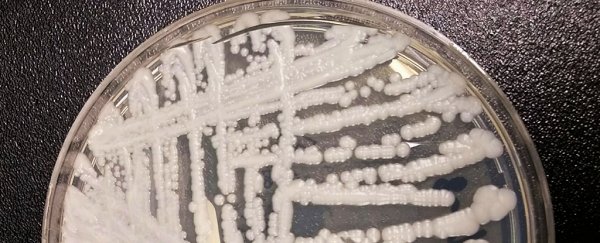In 2009, a never-before-seen yeast emerged from the ear canal of a 70-year-old Japanese lady. Unfortunately, this yeast – known as Candida auris – is a health menace, having now spread around the world and become resistant to multiple drugs. A new study now shows it also reproduces in an unexpected way.
C. auris isn't your helpful bakers or brewer's yeast. It has a bad track record of ending up in hospitals and infecting those with weakened immune systems. Unfortunately, it doesn't just stay in the ear, it can enter the bloodstream as well; without an effective antifungal, patients can die.
Normally, yeast undergoes asexual reproduction through budding and splitting into daughter cells. But researchers from McMaster University in Canada have now detected evidence of sexual reproduction in C. auris. This could result in more drug-resistant and virulent strains of the fungus.
"So far, no evidence for mating and sexual reproduction have been reported in C. auris," the team writes in their new paper.
"This study identified limited but unambiguous evidence of recombination in both the total sample and within individual clades."
Recombination – the reshuffling of genetic information – can't happen in asexual reproduction, meaning that at some point during the past there had to be some hanky panky on the cards (or some other way of shuffling around genetic information).
Although we haven't seen the yeast in action, the idea that C. auris occasionally sexually reproduces is actually not as crazy as it sounds. We already know that a much more famous type of yeast, Saccharomyces cerevisiae (this is the yeast used in baking, winemaking, and brewing) will very occasionally mate with each other – particularly when undergoing stressful conditions.
The team didn't catch C. auris in the act, but they were able to analyze the fungal and mitochondrial genes in 1,285 strains of fungus. This allowed them to look at the genetic differences between the five clades of C. auris, as well as within the clades themselves.
The team found some recombination, but most of it occurred before the yeast split into the five clades. Some clades have seemingly lost the ability to mate, while others have had limited recombination since the split. So, although sex might occasionally be happening, it's absolutely not frequent.
But even infrequent sex can potentially cause new resistances or other ways of making this pathogen worse for us humans.
"The research tells us that this fungus has recombined in the past and can recombine in nature, which enables it to generate new genetic variants rather quickly," explains McMaster's University microbial geneticist Jianping Xu.
"That may sound frightening, but it's a double-edged sword. Because we learned they could recombine in nature, we could possibly replicate the process in the lab, which could allow us to understand the genetic controls of virulence and drug resistance and potentially other traits that make it such a dangerous pathogen, much faster."
Although there are lots more we need to know about C. auris, looking deep at its genes to discover a sex life is a good place to start.
The research has been published in Computational and Structural Biotechnology Journal.
